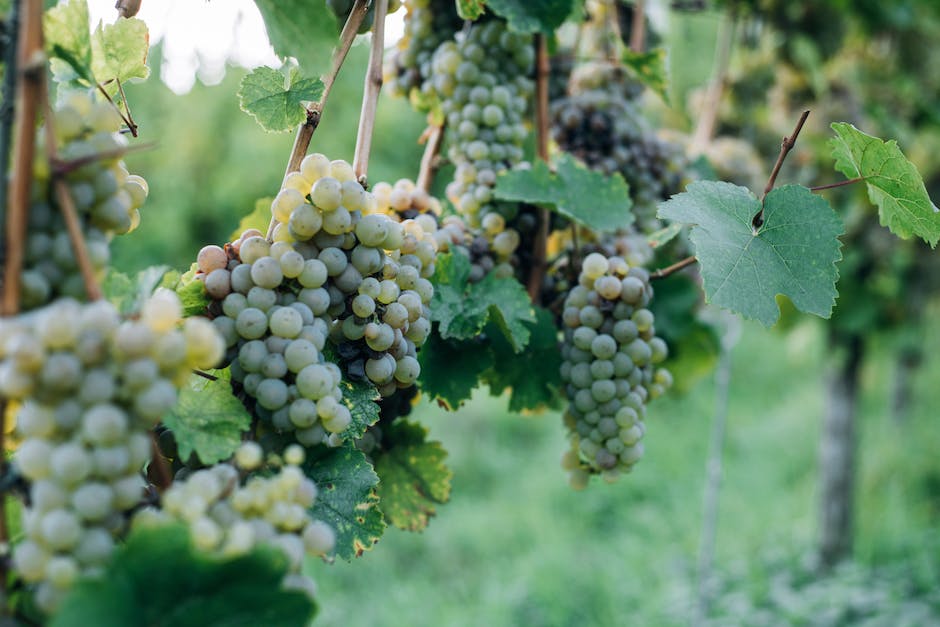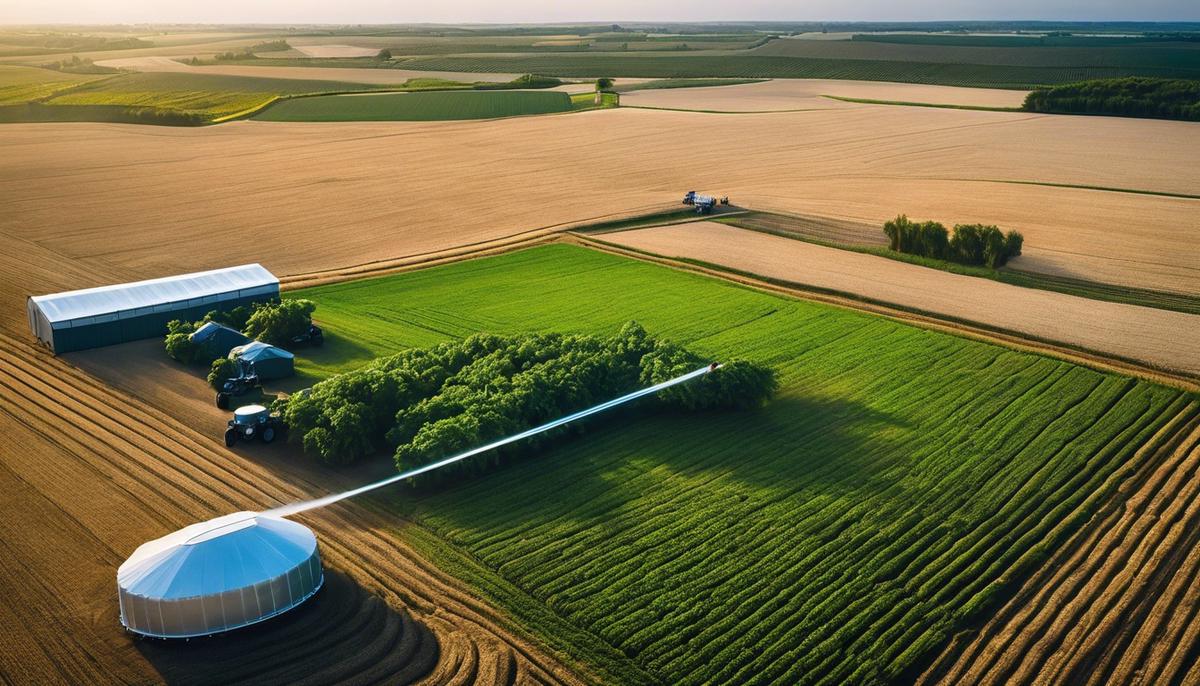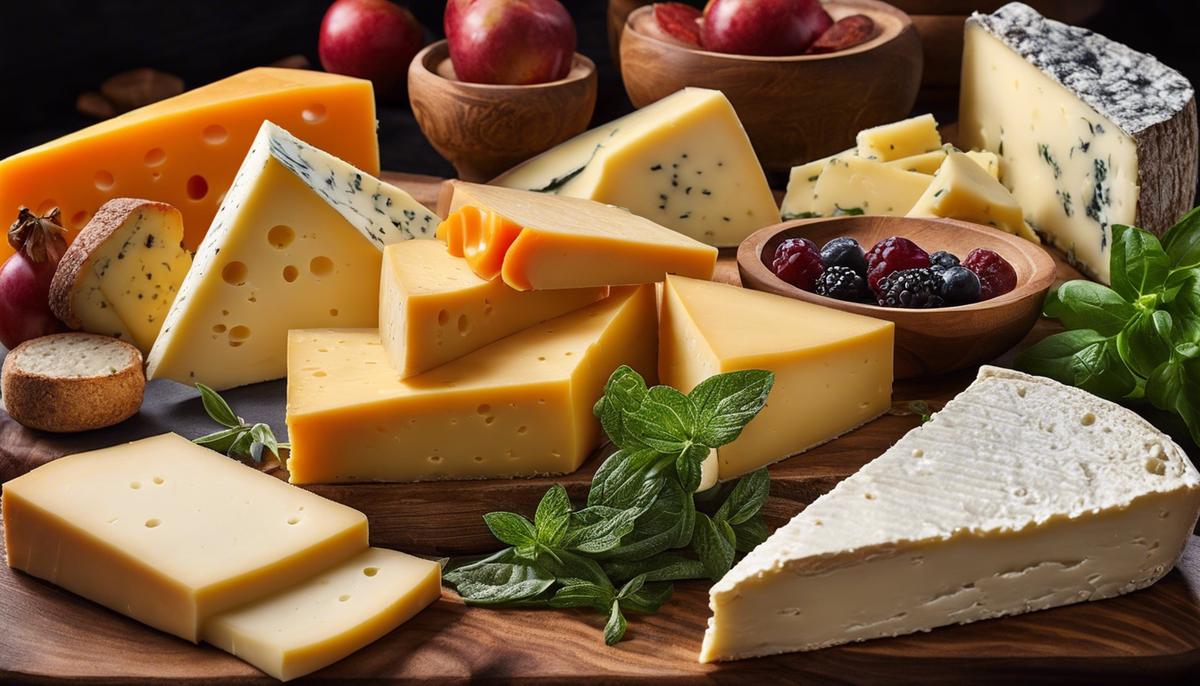

Agridisk
Egypt - Alexandria

All About Innovation In Food Production 2023 & What is the best food innovation in 2023?
Description: In a rapidly evolving world, food production remains at the epicenter of innovation and technology, driven by a relentless quest for sustainability, efficiency, and quality. As we tread on the brink of a new era, the year 2023 poses immense opportunities for exponential growth in sustainable food production methods, genetic modifications, technology integration, and microbial innovation. The pace of these advancements calls for a deeper understanding of their facets, impact, and potentials, painting a vivid picture of the future of food production. The revolutionary strategies such as precision agriculture, vertical farming, aquaponics, and hydroponics are significantly reshaping the concept of sustainability. The technological intervention, including robotics, AI, big data, and IoT, is set to streamline the sector like never before. The science of genetic modifications holds the promise of disease-resistance, productivity, and enhanced adaptability, while microbial innovations inspire sustainable farming and creation of new-age food products. A confluence of forceful factors projects a surge in the significance of sustainable food production in 2023. Escalating demands due to a burgeon global populace, dwindling conventional resources, and the harsh impacts of climate change beckon for voracious technological innovations. This article seeks to explore the key innovations slated to transform the modus operandi of sustainable food production in 2023. The past few years have witnessed a dramatic ascent of the Internet of Things (IoT) in the agritech landscape. Fleet-footed advancements have rendered IoT pivotal to the digitization of farming; subsequently, synonymous with "smart farming." Digital twinning, a concept of IoT, enables the creation of highly detailed virtual models of physical entities like crops. These digital siblings provide dynamic forecasts of crop performance under varying conditions, thereby pushing the boundaries for optimizing resource usage while enhancing yield and quality consistently. Concurrently, biotechnology unravels an abundance of potential. Vertical farming couples the science of hydroponics, aeroponics, or aquaponics with cutting edge light-emitting diode (LED) technology to create a controlled environment for growth. Indoor vertical farming counterpoints traditional agriculture's spatial limitations and the trials of inclement weather, thus offering a sustainable solution to escalating land scarcity and climate uncertainties. Genome editing, most prominently Clustered Regularly Interspaced Short Palindromic Repeats (CRISPR) technology, is a breakthrough tool in the biotechnology arsenal. This innovation allows scientists to modify an organism's DNA accurately. By amplifying desired traits in crops and livestock or eliminating undesired ones, CRISPR contributes to productivity enhancements and disease resistance, spurring sustainable food production. Reinventing dietary sources also evolves as a poignant disruption in sustainable food production. The notion of cultured or lab-grown meat, a seeming excerpt from a science fiction novel, is now a reality. Cultured meat technology circumvents the need for raising and slaughtering animals, consequently mitigating greenhouse gas emissions and offering a humane alternative. Lastly, plant-based protein sources are gaining favor as a sustainable choice. Recent strides made in this field have led to shockingly accurate simulacra of animal-based products that boast similar texture, taste, and nutritional benefits. In toto, the sustainable food production horizon is ripe with potential. Driven by smart technology, biotechnological strides, and shifts in dietary sources, these innovations promise to help sustainably feed a robust population set against an ever-impugned climate. The year 2023 is projected to refine and amplify these methods, further invigorating this critical frontier. Delving further into the advancement of technology in sustainable food production, we turn our attention to AI-driven (Artificial Intelligence) predictive analytics. The primary role of predictive analytics lies in enabling farmers and producers to make optimal decisions for their yield. This is accomplished by providing insights on weather patterns, disease outbreaks, and pest invasions. Artificial Intelligence is currently being calibrated to parse extensive data sets, recognize patterns, draw meaningful deductions, and make data-backed predictions in real-time. Thus, the potential to revolutionize the agricultural industry in 2023 is palpable. Next, we proceed to robotics which, in the domain of agriculture, has notably moved from novelty to necessity. Agricultural robots or AgBots, as they are colloquially known, are forecasted to perform tasks such as planting, harvesting, and fertilizing more efficiently than human hands. These tasks extend to the more complex, requiring detailed discernment, such as identifying and exterminating weeds or diseased crops. In 2023, we can anticipate a more widespread deployment of AgBots, with increased capabilities and reduced costs. With constant innovation, it is also anticipated that Virtual Reality (VR) and Augmented Reality (AR) will pave the way for immersive farming experiences in the coming year. While VR can simulate different farming environments, AR can augment our understanding of farming techniques by overlaying digital information onto real-world environments. This integration would essentially enable farmers to practice crop management strategies in a risk-free, virtual environment before implementing them in the field. Lastly, we observe drone technology. These automated, unmanned aerial vehicles possess the capacity to cover large crop fields in a short time, providing high-resolution, real-time data on crop health and soil conditions. Already widely adopted, it is projected that 2023 will not only see a significant increase in drone use but also an enrichment in the technology they carry - from multispectral imaging sensors to sophisticated flight software. In conclusion, the evolution of food production in the face of technological integration moves from hopeful to reality. Given the current pace of technological development, we are fast approaching a stage in which sustainable food production becomes a tangible, achievable goal for the global community. Driven by innovation, and with perseverance, it is a vision for the not-so-distant future that can be grasped with both hands. As 2023 approaches, we look ahead to a world in which technology and food production intermingle even deeper, nurturing more sustainable, efficient, and resilient food systems to enrich and elevate human existence. Continuing to chart progress in sustainable food production, 2023 has witnessed the commendable emergence of microbial innovations, further strengthening the pillars of food security and resilience. Emergent microbial technologies offer transformative potential to augment food production processes, and they exemplify the pioneering nature of contemporary scientific endeavors. In 2023, the cultivation of bacteria, yeast, and fungi has become an integral part of sustainable food production. These microorganisms are deployed to break down organic waste into nutrient-rich fertilizer, taking food production full circle in a manner that eliminates waste and maximizes sustainability. In an era defined by improved resource optimization and efficiency, these biofertilizers represent a vital shift towards a circular food economy. The advent of designer microorganisms marks an extraordinary leap in food production. By engineering beneficial microorganisms, scientists have enhanced their abilities to fix nitrogen, resist pathogens, and stimulate plant growth. These engineered organisms can serve as highly effective, natural alternatives to chemical fertilizers and pesticides. The capability to naturally bolster crop health is an essential component in today’s maximum yield picture - bountiful and high-quality crops, minus the harmful side effects of traditional soil treatments. There is also the game-changing aspect of microbial protein production to consider. Nutrient-rich protein derived from bacteria, yeast, or algae offer new prospects in the grand quest to diversify dietary sources. As clever alternatives to conventional animal and plant-based proteins, these microbial proteins meet the vast protein requirements of a burgeoning global populace with a far smaller environmental footprint. Combined with Genome-Wide Association Studies and synthetic biology, microbial innovations also enable precise, biofortified crop breeding. Enhanced crops, packed with essential nutrients, bring us closer to eradicating malnutrition, one of our era’s most pressing challenges. Moreover, by adopting synthetic biology methods to modify bacteria and yeasts, we are now able to produce plant-derived compounds without the use of plants at all - everything from flavors and fragrances, to nutritional additives and pharmaceuticals. It’s a brave new world of bio-production indeed. In what may seem a storyline from a future-century novel, scientists have cultivated edible vaccines within fruits and vegetables, using engineered bacteria. This revolutionary approach could democratize access to vital vaccinations worldwide and play a key role in global health security. Microbial innovation's contributions to sustainable food production are manifold, pointing towards a future where our food systems are not just capable, but also compassionate, ethical, and sustainable. These developments offer a glimmer of an exciting new chapter in food production, fueled by the limitless potential of microscopic lifeforms. While we combat the growing challenges of the same old, the new fields of science are helping usher in a more hopeful, more sustainable, and more resilient tomorrow. Food Production in 2023 is a markedly distant entity from what it is today, taking giant leaps towards impeccable efficiency, sustainability, quality, and output through breakthrough advancements. The stage is set for an array of disciplines including precision farming techniques, high-end technologies such as AI, robotics, IOT, and extensive genetic modifications, to join forces and redefine the contours of food production. The science of microbes is posed to extend its influence from sustainable farming to waste reduction and lab-grown meat, revealing the infinite possibilities harbored by this field. Heightened by innovation and fueled by the need for better food security and conservation, 2023 will welcome a food production sector irrevocably transformed and optimally equipped for the future. As the culinary landscape continuously evolves with the tide of innovation, 2023 has unveiled some groundbreaking food revolutions that are reimagining our plates and palates. In a remarkable feat of science and culinary artistry, the emergence of cultured meat has begun to redefine our notions of sustainability and ethics in the food industry. This pioneering concept not only caters to the epicurean delight of meat lovers but also alleviates the environmental pressures associated with conventional meat production. As we probe deeper into this exciting year, we are also witnessing a renaissance in the world of dairy-free delicacies—specifically, plant-based cheeses. No longer a mere afterthought in the gastronomic world, these new and improved cheese alternatives are winning hearts with their uncanny ability to replicate the taste and texture of their dairy counterparts. Join us on this savory journey through the best food innovations of 2023, where tradition meets technology on the tip of your tongue. Oh, fellow food aficionados, the culinary landscape is undergoing a transformation so radical it could redefine the future of not just our dining experience but our planet as well! Enter the brave new world of cultured meat – that's right, meat grown in a lab rather than from an animal. The cultured meat movement is stirring the pot in thrilling ways, promising a shift towards sustainability without compromising our collective adventure of taste. Let's carve into this meaty topic and see how it's rethinking the norms of our kitchens. Here's a taste of the future: meat that's indistinguishable from the farm-raised variety, cultivated from a smattering of animal cells in a bioreactor instead of a pasture. The science is as flavorful as it is mind-boggling, giving rise to beef, chicken, and even fish that never once swayed in a field or swam in the ocean. This birthing process slashes the substantial environmental hoof print of traditional animal farming, garnering an enthusiastic nod from Mother Nature herself. You're not the only one wondering – does this futuristic feast hold up on the palate? The answer, seasoned with a pinch of surprise, is a resounding yes. Cultured meat innovators are meticulously perfecting the taste, texture, and juiciness. The best part? All this savory goodness comes without the environmental flat notes of greenhouse gas emissions and land degradation that accompany traditional meat production. Let your moral compass stew on this: cultured meat offers a compassionate alternative to conventional meat that's imbued with the spirit of animal welfare. No more sour aftertaste of guilt, as this method promises a plate that's free of the bitter truth of factory farming, letting the conscious consumer dine in peace. The cultured meat movement doesn't just mirror the succulent flavors of traditional meat; it's got the potential to remix them – imagine a protein profile peppered with extra nutrients. The science of cultured meat can be finessed to not just emulate but enhance, offering a seasoned medley of health benefits tailored to the modern diet. Here's food for thought that's hearty and hopeful: cultured meat could be a key ingredient to garnish global food security, cooking up an answer to the hunger that plagues parts of our world. It's capable of freeing up vast tracts of land and resources, serving up a helping of optimism about our ability to feed a burgeoning population without biting into our planet's dwindling resources. To those of us whose lives whirl around the whisking, sizzling, and savoring of food, the cultured meat movement isn't just another recipe in the cookbook of gastronomic trends. It’s a bold fusion of science, ethics, and flavor, a chance to sate our appetites while nurturing the world we so cherish. With this nouveau nourishment, food continues to weave us together – a tapestry of humans seeking sustenance and the sweet symphony of shared taste, all gathered around the global table. Now, who's ready to slice into the future? Hungry for more? Stay tuned, keep your forks ready, and let's continue to stretch our imaginations around the culinary fire of innovation. Keep tasting, keep exploring, and let’s feast on the future together. For the ardent cheese lovers whose palates have been finely tuned to the symphony of flavors that traditional dairy cheeses provide, the rise of plant-based cheeses poses an intriguing question: can these new kids on the block truly rival the tried and true champions of our pizzas, cheeseboards, and comfort meals? As a food-loving community that thrives on innovation and inclusivity, we are witnessing a pivotal era of plant-based cheese transformation that may very well shift the culinary landscape. The quest for the perfect melt in plant-based cheeses is a high-stakes endeavor. Innovators in the food industry are exploring combinations of oils, starches, and proteins from nuts and vegetables to replicate the irresistible pull of melted mozzarella and the comforting blanket of cheddar. Advances in food science have birthed formulations that not only melt and stretch with convincing decadence but also brown and bubble under the broiler, much to the satisfaction of discerning pizza aficionados. In the realm of taste, plant-based cheese artisans are pushing boundaries beyond the mere mimicry of their dairy counterparts. By employing fermentation processes with various plant-based substrates, these cheese pioneers unlock deep umami flavors and rich nuttiness that can stand in their own right. Sunflower seeds, oats, and cashews are just the starting canvas for a plethora of gourmet flavors that await. For those navigating dietary restrictions or seeking a lighter fare, plant-based cheeses offer an indulgence that aligns with their health goals. Often lower in saturated fats and devoid of cholesterol, these cheese alternatives are making their mark among those who prize not just flavor but also well-being. One can't overlook the influence of local and exotic ingredients being introduced into plant-based cheeses around the world. Regional spices, herbs, and vegetable inclusions are paying homage to the traditions of diverse cultures, while simultaneously concocting new taste sensations. This global pantry infuses plant-based cheeses with a sense of place and story, enriching the culinary experience. No cheese stands alone; it is celebrated in its harmony with other ingredients. Whether it's a sharp plant-based feta that elevates a Greek salad or a creamy spread that becomes the heart of a vegan charcuterie board, these non-dairy options are proving to be just as versatile in cooking and pairing. Their performance in sauces, gratins, and as toppings solidifies their role in the kitchen repertoire of home chefs and professional culinarians alike. In the tapestry of food that connects us, plant-based cheeses are also threads of social consciousness, appealing to those who seek to reduce their environmental footprint or advocate for animal welfare. With a lower ecological impact, opting for these alternatives is seen as a responsible, yet no less tasty, choice. As the culinary world continues to evolve, plant-based cheeses are transforming from novelties to mainstays in kitchens and on menus across the globe. Whether they fully capture the hearts of dedicated dairy cheese lovers remains a savory tale in the making. But one thing is certain: the pursuit of innovation, flavor excellence, and inclusivity in our food choices is making the cheese experience richer than ever before. The culinary realm is continually flavored with innovation, and as we savor the pioneering tastes of 2023, it's apparent that our approach to food and its impact on the planet is transforming. Cultured meat and plant-based cheese are just the appetizers in a much grander meal of technological advancements that promise a future where flavor coexists harmoniously with ethical and environmental responsibility. These food marvels beckon us towards a culinary utopia where every bite assures the protection of our earth and the celebration of our senses. As we relish in the knowledge that our feasts need not compromise the health of our planet, let us toast to the incredible endeavors that continue to shape a delicious and sustainable world for all. The food industry, ever-evolving and influenced by a myriad of factors, finds itself at a fascinating juncture in 2023. As digitization and sustainability shape consumer habits, businesses are rapidly adapting to meet new demands and challenges. This essay serves as a culinary compass to guide the gastronomically curious through the latest transformations defining our diets and dining experiences. From the upsurge in plant-based innovations mimicking the finest qualities of animal products to the integration of advanced technologies in our food systems, these trends are a feast for thought. We will explore the rich tapestry of sustainable practices being woven into the very fabric of the industry, and how technology is not only enhancing efficiency but also crafting unprecedented dining escapades. Moreover, with a magnifying glass on health and nutrition, we will dissect the growing appetite for foods that promise to nourish body and mind alike. Join us on this flavorful journey through the savors and stories that are setting the table for the future of food. Imagine the scene at a typical dinner table just a decade ago. Your plate potentially boasted a hefty portion of meat, flanked by a side of vegetables and carbs – a familiar sight in homes across the nation. Fast forward to today, and there's a revolution happening right under our noses, and more importantly, on our plates. Welcome to the era where plant-based innovation is not merely a trend but a groundbreaking movement reinventing the culinary landscape. The driving force? Astute entrepreneurs and food scientists who recognize a twofold opportunity: consumers are increasingly health-conscious and care deeply about sustainability. It's not just about offering an alternative; it's about creating options that are so enticing, even the most devout carnivores are tempted to take a walk on the plant-based side. The secret sauce to this industry transformation is technology. No, not the kind that beeps and buzzes, but the culinary wizardry that has enabled the creation of plant-based proteins that rival their animal-derived counterparts in taste, texture, and versatility. This isn't your garden-variety veggie burger we're talking about. These are products like pea-protein burgers that bleed beet juice, or morsels of cultured meat grown in a petri dish, with flavor profiles meticulously engineered to satiate and satisfy. Beyond the burger, innovation unfurls across the entire food sector. Dairy aisles are brimming with almond, soy, oat, and cashew milks. Plant-based cheese melts and stretches with pizzazz, while egg substitutes whip up into fluffy omelets. This revolution caters to every palate, bringing indulgence and variety to discerning diners who demand more from their meals – both nutrition and ethics on a plate. What's simmering underneath all this? Market dynamics. Commerce is the bloodstream that oxygenates this movement. Consumers vote with their dollars, and as more choose to invest in plant-based options, the industry responds with competitive gusto. R&D budgets swell as companies vie for a slice of the veggie pie. This is not solely a niche for startups; even entrenched food industry Goliaths are diversifying their portfolios to ensure a piece of the plant-based action. In this vanguard, restaurants also reimagine menus. Gone are the days when the single veggie option was an uninspired afterthought. Now plant-based dishes are the stars, often outshining traditional menu items in creativity and popularity. The ripple effect of this surge in plant-based popularity is seen far and wide. Agriculture pivots to support new types of crops, while sustainability metrics start leaning favorably in the environmental ledger. Animal welfare advocates find an unexpected ally in their corner, and health professionals nod approvingly as diets rich in plants align with their advice. To be clear: this isn't a passing fad; it's a substantial shift shaped by innovators and visionaries who gambled on the green and won. It's a renaissance on the plate; a union of the culinary and the conscious, satisfying the belly and the soul. Here's to a future where every meal is an opportunity for innovation, for pleasure, and for a healthier planet. The table is set – let's feast on the possibilities. Evidently, sustainability is now the currency of competitive advantage in the marketplace, far beyond the confines of the plant-based culinary boom. Companies across the board are responding to a crystal clear signal: consumers prefer businesses that are socially conscious and environmentally friendly. From renewable energy to ethical supply chains, the drive towards 'green' practices is a modern-day gold rush for those eager to lead, not just follow. Enter the age of circular economics, where waste is not an end product but a resource. This is a game-changer for manufacturers and service providers. By upcycling waste into new products, brands are not only reducing their environmental footprint but are also creating unique value propositions. Consumers are eagerly patronizing companies that offer such innovative solutions, leading to increased brand loyalty and market share. Moreover, sustainability is proving to be a powerful tool for risk management. Climate change and resource scarcity are emerging as material risks for businesses. By adopting sustainable practices, companies are strategically positioning themselves to mitigate these risks. They are future-proofing their operations against potential regulatory changes—such as carbon taxes and environmental compliance standards—that can impact the bottom line. Investors are not just taking note—they are actively changing their portfolios. The rise of ESG (Environmental, Social, Governance) investing principles signifies a tectonic shift in capital flow. Businesses with strong sustainability profiles are increasingly attractive to investors, securing funding channels that might elude their less sustainably minded competitors. A noteworthy aspect of embedding sustainability into corporate DNA is the talent magnet it becomes. Top-notch professionals are looking to align themselves with brands that reflect their values. This alignment is a major draw for the workforce which, in turn, leads to innovative thinking and enhanced productivity within firms. In the digital and social media age, reputational impact is instantaneous and immense. One environmental misstep can be a brand's undoing. Conversely, a strong record in sustainability becomes the best form of public relations, resonating with a customer base that is watching and weighing a company's every move. Lastl, let's talk operational efficiency. Implementing eco-friendly practices typically leads to increased efficiency and cost savings. Energy conservation, water stewardship, and waste reduction - these are not just noble initiatives, they are bottom-line improvers, too. In essence, businesses are realizing that turning 'green' is not merely a fad; it's foundational to their competitive strategy. Sustainable practices unlock somewhat of a virtuous circle—fueling innovation, building customer loyalty, attracting investment, drawing talent, while all along mitigating operational and reputational risks. Those who fail to make sustainability central to their value proposition do so at their peril, for as the market has made it abundantly clear, the future is not just bright, it's sustainable. Steering the Conversation Towards Food Tech Innovation Beyond Plants Technology continues to redefine the food industry, offering consumers unprecedented options and convenience. Smart kitchens and the dawn of robotics are revolutionizing how and where food is prepared. With kitchen tech becoming more sophisticated, the era of personal chefs may soon pivot toward personal cooking robots. These culinary automatons are not only precise but offer 24/7 productivity, reducing labor costs and human error. Moreover, food delivery apps are reshaping the dining experience. Gone are the days of limited takeout options. Now, a diverse array of cuisines from high-end restaurants to local food joints arrive at doorsteps with a simple tap on a screen. This digital transformation facilitates a seamless interface between consumers and restaurants, propelling a delivery economy that accelerates at a breakneck pace. Further, big data and AI are perfecting supply chain logistics. From inventory management to predicting consumer trends, technology provides actionable insights that drive cost efficiency and fresher products to market. The result? A robust food industry less prone to the traditional pitfalls of overstocking and wastage. Let's also talk about vertical farming – a boon to urban centers where space is limited. By stacking crops in controlled environments, these vertical farms optimize space and yield. What's more, they slash transportation costs and carbon footprints, delivering hyper-local produce literally from farm to table. Food safety technology, an often-overlooked sector, is crucial to maintaining public health and trust. Innovations like blockchain make traceability a cinch, ensuring that every stakeholder in the food chain can pinpoint a product's journey from origin to consumption. In a world increasingly concerned with the provenance of food, this transparency is non-negotiable. In closing, the nexus of technology and the food industry is crafting an environment ripe for disruption. Today’s discerning consumers demand quality, convenience, and sustainability – and the market is responding with gusto. As innovation becomes as essential to the food industry as salt is to cooking, only those who adapt will lead the next wave of culinary evolution. In an era where customers crave experiences just as much as flavors, experiential dining is setting the stage for the next big upheaval in the restaurant industry. This movement is not just about serving food; it's about curating moments that make dining out an event to remember. Let's chew over how this innovative approach is rewriting the recipe for restaurant success. From mere meals to memorable experiences, experiential dining transforms a regular dinner into a multi-sensory journey. Restaurants are now stages, with chefs as the headlining acts. Picture dishes that aren't simply placed before diners but performed, unfolding through storytelling or interactive presentations. The goal? To immerse patrons in a culinary theatre that tickles every sense. Consider the impact of themed dining ventures that are painting the town in various hues. Enter the age of the pop-up, where a temporary eat-out spot dazzles with its novelty, or the immersive escape that partners a five-star meal with a narrative to transport you into another world. This isn’t just eating; it’s an adventure, a story in every bite that plays out in real-time. Let’s not forget how personalization is front and center on today's menu. No longer is it just about allergies or dietary preferences; now, customers can have a hand in crafting their culinary journey. Bespoke meals create stronger connections between diners and their plates, fostering loyalty that keeps patrons coming back for more. But how does this affect the business behind the bites? Experiential ventures necessitate a financial model that prizes creativity and customer engagement as much as cost-efficiency. This means investments in ambience, technology, and talent that can make a simple meal an unforgettable encounter. The ROI? It'll show up in the hashtags, the social media buzz, and the heightened demand that uniquely immersive experiences can generate. Moreover, the rise of this trend is rewriting staff roles. Waitstaff now double as storytellers or guides, and chefs are harbingers of gastronomy, each a crucial element in delivering the overarching experience. Finally, the digital world’s role in amplifying these ventures cannot be overstated. Online platforms have become essential in teasing these experiences and securing pre-arrival excitement. The anticipation of a dining escapade is a powerful marketing tool, and savvy restaurateurs are leveraging it to its fullest. Experiential dining isn’t a fleeting fad; it’s a fresh perspective that's redefining not only the dining culture but also the economic model driving the restaurant industry. It's time to dine boldly, with experiences as exquisite as the entrees served. Experiential Dining: Engaging the Senses and Wallets of Health-Conscious Consumers In the current gastronomic epoch, dining is no longer a mere act of sustenance—it's an orchestrated experience that tantalizes the senses, tells a story, and forges an indelible connection with guests. Enter experiential dining, the latest trend that's rejuvenating the restaurant scene and capturing the attention of both health-conscious consumers and savvy investors. Experiential dining turns restaurants into veritable theaters, with chefs as the venerated performers. Every dish is an act, every course a scene, collectively unfolding a narrative that enthralls the diner not only with its flavor but with its presentation and origins. A chef's creativity is now on full display, crafting menus that reflect both culinary innovation and the ever-increasing desire for healthier options. This isn't dining; it's a gastronomic escapade, and it's revolutionizing how restaurateurs think about their craft. Themed dining ventures and ephemeral pop-up restaurants are splashing vibrant hues onto the canvas of the food industry. These concepts allow adventurous diners to step into different worlds, eras, or cultures, all while partaking in meals that honor health and nutrition. By pushing the envelope on creativity, these ventures invite patrons to not just eat, but to engage in a storyline that resonates on a personal level. Personalization is not merely a touch—it’s a cornerstone of this dining evolution. Health-oriented individuals now expect their meals to reflect their lifestyle, goals, and nutritional preferences. This bespoke approach to dining isn't just about allergens or dietary restrictions; it's about crafting a meal that feels intensely individualized, whether it's keto, paleo, vegan, or any other particular nutritional regime. This shift isn't just culinary; it's profoundly economic. Injecting capital into ambiance, cutting-edge technology, and top-tier talent is now as crucial as the food served. Designing an immersive environment that telegraphs the experiential intent means investing in sights, sounds, and a service team that can deliver more than just a meal—they're part co-conspirator, part guide, and part confidante to the diners embarking on this culinary journey. The financial implications of experiential dining pivot around these integrated investments. It's a model where every dollar spent aims to elevate the diner's experience, substantiating higher price points with unparalleled value. Crucially, the staff's role has been redefined—they're integral to this choreography, with the acumen to navigate a diner's journey through an evening's story. Behind the scenes, the strategic use of online platforms to build these dining escapades' mystique cannot be overstressed. Social media and digital marketing are instrumental in conjuring anticipation, sparking curiosity, and cultivating an allure that can transform a one-time visit into a recurring pilgrimage. The surge in health-conscious food products has met its match in experiential dining, resulting in a golden age for those with a taste for the novel, the nutritious, and the narratively rich. The future of dining beckons, not as a passive event, but as an active personal adventure—immersive, health-conscious, and utterly unforgettable. The fusion of technology, sustainability, and an increased consciousness about health and nutrition is plating up a future of food that is at once exciting and daunting. As we've traversed through innovative plant-based developments, zero-waste movements, tech-enhanced supply chains, and immersive dining experiences, one thing becomes clear: the industry is cooking up a revolution. The very essence of what we eat, how we eat, and the impact of our eating is undergoing a profound transformation. In this landscape, informed consumers and forward-thinking businesses are the key ingredients to ensuring that the next chapter in the story of food is not only delicious but also responsible and inclusive. With each bite, sip, and click, we're redefining the gastronomy of tomorrow, and the flavors of the future have never looked so promising.All About Innovation In Food Production 2023 & What is the best food innovation in 2023?
All about innovation in food production 2023
Sustainable Food Production Methods

Technology Integration in Food Production

Microbial Innovations in Food Production

What is the best food innovation in 2023?
Cultured Meat Revolution
The Birth of a New Breed
A Symphony of Flavors without the Environmental Flat Notes
A Pan-seared Perspective on Animal Welfare
A Spice Rack of Nutritional Possibilities
Plating up Global Food Security

Plant-based Cheese 2.0
The Emergence of Plant-Based Cheese in Culinary Culture
Crafting the Perfect Melt
Flavor Frontiers
Health Conscious Indulgence
Local and Exotic Twists
Pairing and Cooking Versatility
Socially Conscious Consumption

What are the trends in the food industry in 2023?
Plant-Based Innovation | The food industry
Plant-Based Pioneering: A Tastemaker's Game-Changer
Sustainable Practices | The food industry

Technology Integration | The food industry

Experiential Dining | The food industry
Shifting the Spotlight to Experiential Dining: Revolutionizing the Restaurant Business Model
Health and Nutrition | The food industry